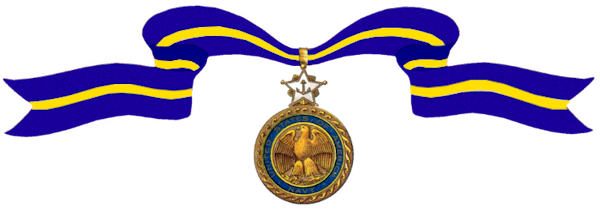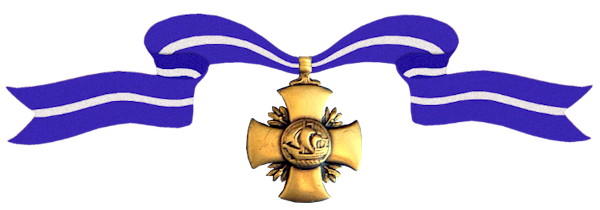Ernest McWhorter graduated from the U.S. Naval Academy at Annapolis, Class of 1907. He retired as a U.S. Navy Rear Admiral.

Awards Received
-

Navy Distinguished Service Medal
-

Navy Cross
-
Navy Distinguished Service Medal
Service:
United States NavyRank:
Rear AdmiralRegiment:
Air GroupDivision:
Western Naval Task ForceAction Date:
November 1942
Bureau of Naval Personnel Information Bulletin No. 313 (May 1943)The President of the United States of America takes pleasure in presenting the Navy Distinguished Service Medal to Rear Admiral Ernest Doyle McWhorter, United States Navy, for exceptionally meritorious and distinguished service in a position of great responsibility to the Government of the United States, as Commander of the Air Group of the Western Naval Task Force, prior to and during the attack phase of the occupation of French Morocco in November 1942. Rear Admiral McWhorter insured the complete and successful performance of the tasks assigned to the Group, by the exhaustive training and indoctrination of his Air Group and by the detailed planning for the tasks, during the exacting and comprehensive preparation for the protection of the Western Naval Attack Force. In gaining control of the air in that area, neutralizing hostile shore batteries, and conducting anti-submarine and air combat patrols while at the same time providing fighter coverage of our own troops landing at three widely separated points, the Air Group shot down 26 planes and destroyed more than 100 on the ground.
-
Navy Cross
Service:
United States NavyRank:
CommanderDivision:
U.S.S. K-5Action Date:
World War I
The President of the United States of America takes pleasure in presenting the Navy Cross to Commander Ernest Doyle McWhorter, United States Navy, for exceptionally meritorious service in a duty of great responsibility in Command of the U. S. submarine K-5 and of Submarine Division 4, making a voyage from the United States port to Ponta Delgada, Azores Islands, in very bad weather. Subsequently, as a division commander, he brought five submarines from the Pacific coast to the Atlantic. Later he took the Alert and three submarines to Ponta Delgada, and from that port returned to Bermuda with these submarines. He picked up a fourth submarine, and proceeded to San Pedro on the Pacific coast. The above constitutes a very unusual record of deep-sea voyages in winter weather with small submarines.

